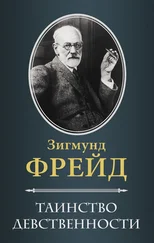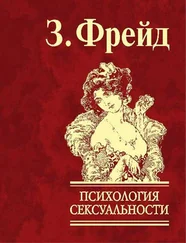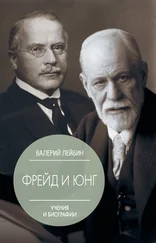Frazer, Taboo , p. 166, according to S. Mueller, Reisen en Onderzoekingen in den Indischen Archipel . (Amsterdam, 1857).
For these examples see Frazer, Taboo , p. 165–170, “Manslayers Tabooed.”
Frazer, Taboo , p. 132. “He must not only be guarded, he must also be guarded against.”
Frazer, The Magic Art , I, p. 368.
Old New Zealand , by a Pakeha Maori (London, 1884), see Frazer, Taboo , p. 135.
W. Brown, New Zealand and Its Aborigines (London, 1845) Frazer, l.c.
Frazer , l.c.
Frazer, Taboo . The Burden of Royalty , p. 7.
l.c. , p. 7.
Kaempfer, History of Japan , see in Frazer, l.c. , p. 3.
Bastian, The German Expedition to the Coast of Loango (Jena 1874), cited by Frazer, l.c. , p. 5.
Frazer, l.c. , p. 13.
Frazer, l.c. , p. 11.
A. Bastian, The German Expedition on the Coast of Lonago , cited by Frazer, l.c. , p. 18.
l.c. , p. 18. According to Zwefel et Monstier, Voyage aux Sources du Niger , 1880.
Frazer, The Magic Art and the Evolution of Kings , 2 vols., 1911 ( The Golden Bough ).
Frazer, Taboo , p. 148, etc.
W. Mariner, The Natives of the Tonga Islands , 1818; see Frazer , l.c. , p. 140.
The same patient whose ‘impossibilities’ I have correlated with taboo (see above, p. 47) acknowledged that she always became indignant when she met anybody on the street who was dressed in mourning. “Such people should be forbidden to go out!” she said.
Frazer, l.c. , p. 353.
Frazer, l.c. , p. 352, etc.
Frazer, l.c. , p. 357, according to an old Spanish observer 1732.
Frazer, l.c. , p. 360.
Stekel, Abraham .
Frazer, l.c. , p. 353, cites the Tuaregs of the Sahara as an example of such an acknowledgment.
Perhaps this condition is to be added: as long as any part of his physical remains exist. Frazer, l.c. , p. 372.
On the Nikobar Islands , Frazer, l.c. , p. 382.
Wundt, Religion and Myth , Vol. II, p. 49.
The Origin and Development of Moral Conceptions , see section entitled “Attitude Towards the Dead,” Vol. II, p. 424. Both the notes and the text show an abundance of corroborating, and often very characteristic testimony, e.g., the Maori believed that “the nearest and most beloved relatives changed their nature after death and bore ill–will even to their former favourites.” The Austral negroes believe that every dead person is for a long time malevolent; the closer the relationship the greater the fear. The Central Eskimos are dominated by the idea that the dead come to rest very late and that at first they are to be feared as mischievous spirits who frequently hover about the village to spread illness, death and other evils. (Boas.)
R. Kleinpaul: The Living and the Dead in Folklore, Religion and Myth , 1898.
l.c. , p. 426.
Cf. Chap. III.
Freud, The Interpretation of Dreams .
Freud, The Interpretation of Dreams .
The projection creations of primitive man resemble the personifications through which the poet projects his warring impulses out of himself, as separated individuals.
Myth and Religion , p. 129.
In the psychoanalysis of neurotic persons who suffer, or have suffered, in their childhood from the fear of ghosts, it is often not difficult to expose these ghosts as the parents. Compare also in this connection the communication of P. Haeberlin, Sexual Ghosts ( Sexual Problems , Feb. 1912), where it is a question of another erotically accentuated person, but where the father was dead.
Compare my article on Abel’s Gegensinn der Urworte in the Jahrbuch für Psychoanalytische und Psychopathologische Forschungen , Bd. II, 1910.
It is an interesting parallel that the sense of guilt resulting from the violation of a taboo is in no way diminished if the violation took place unwittingly (see examples above), and that even in the Greek myth the guilt of Oedipus is not cancelled by the fact that it was incurred without his knowledge and will and even against them.
The necessary crowding of the material also compels us to dispense with a thorough bibliography. Instead of this the reader is referred to the well–known works of Herbert Spencer, J. G. Frazer, A. Lang, E. B. Tylor and W. Wundt, from which all the statements concerning animism and magic are taken. The independence of the author can manifest itself only in the choice of the material and of opinions.
E. B. Tylor, Primitive Culture , Vol. I, p. 425, fourth ed., 1903. W. Wundt, Myth and Religion , Vol. II, p. 173, 1906.
Wundt l.c. , Chapter IV: Die Seelenvorstellungen .
Compare, besides Wundt and H. Spencer and the instructive article in the Encyclopedia Britannica , 1911 ( Animism, Mythology , and so forth).
l.c. , p. 154.
See Tylor, Primitive Culture , Vol. I, p. 477.
Cultes, Mythes et Religions , T. II: Introduction , p. XV, 1909.
Année Sociologique , Seventh Vol, 1904.
To frighten away a ghost with noise and cries is a form of pure sorcery; to force him to do something by taking his name is to employ magic against him.
The Magic Art , II. p. 67.
The Biblical prohibition against making an image of anything living hardly sprang from any fundamental rejection of plastic art, but was probably meant to deprive magic, which the Hebraic religion proscribed, of one of its instruments. Frazer, l.c. , p. 87, note.
The Magic Art , II, p. 98.
An echo of this is to be found in the Oedipus Rex of Sophocles.
The Magic Art , p. 120.
Читать дальше






